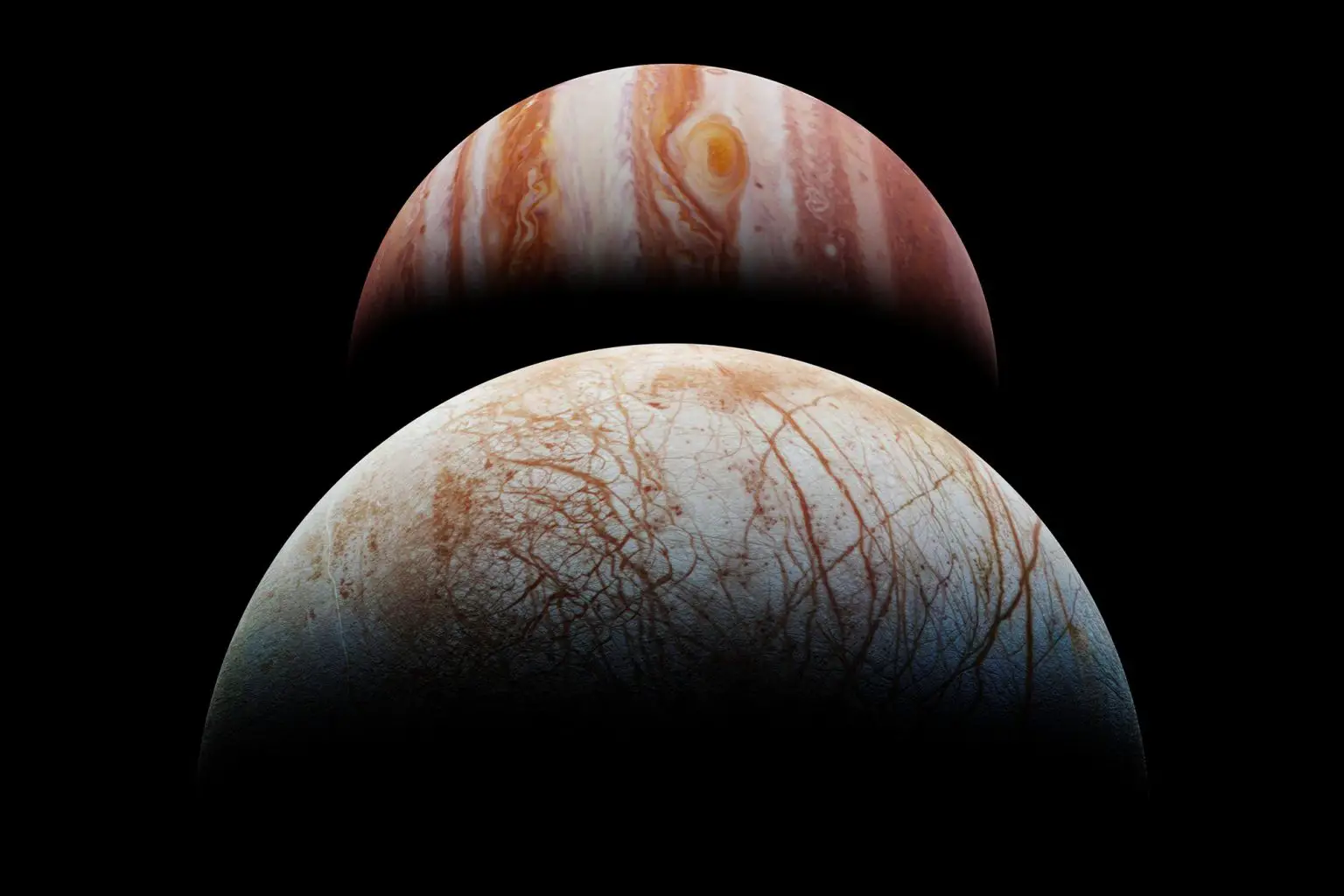There is CO2 in Jupiter's icy moon Europa.
There is a potential hub for extraterrestrial life in Jupiter's Europa moon. The JWST telescope found carbon dioxide from that icy moon. And that thing increases the possibility that there are some kind of primitive lifeforms under the ice of that moon.
The CO2 emission can form in other chemical reactions. But one source of carbon dioxide emission is always lifeforms. The metabolism in cells forms that gas. That's why carbon dioxide emission on Europa moon is interesting and same time scary thing.
If there are some kind of lifeforms under the ice of those icy moons those lifeforms could be similar to lifeforms that live around the black smokers at the bottom of the ocean. And that possibility causes re-estimation about the possible manned- or unmanned flight to those moons. If there is some kind of life forms. It's a risk. That Earth viruses infect those lifeforms. There is a possibility that the virus stays "alive" or can keep its ability to transfer genomes to other species over a long journey.
Otherwise, those lifeforms might infect humans. When we are dealing with extraterrestrial lifeforms, we are facing things that we can't imagine. We have no idea what kind of lifeform that thing is. And we don't know anything about how it exchanges its genomes. Only one virus from Earth could be devastating to those lifeforms. But otherwise, those primitive lifeforms can infect people, who work with the samples.
"Observations from the James Webb Space Telescope have led two independent studies to suggest that the CO2 ice on Jupiter’s moon, Europa, originates from its subsurface ocean. These findings offer new insights into the composition of Europa’s internal ocean, which is considered a prime target in the search for extraterrestrial life." (ScitechDaily/Potential Hub for Extraterrestrial Life: Webb Observations of CO2 on Jupiter’s Moon Europa)
By the way, it's possible that the fungi. Or anthrax-bacteria-type lifeforms can send spores between planets. Cosmobiology experts created a model for interplanetary ecosystems for red dwarfs. And their planetary systems. Those planetary systems are small. And their star is colder than the Sun. So that is why bacterial spores can travel between those planets.
There are observations that Callisto- moon's atmosphere contains CO2. There is also organic dust on those moon's icy shells. And there is a model. That there could be a Gaia-type-organism. That could exchange genomes between those Galilean moons.
It's possible. Primitive lifeforms can travel between planets. Researchers can use the same model for all closed planetary and subplanetary systems like Jupiter's moons. If there are similar chemical and physical environments. Those planetary systems are smaller and their star is colder than the Sun. And there the bacteria spores can survive longer time than in our solar system. And in those solar systems organisms can exchange genomes between planets.
There are also three other moons around Jupiter with oceans below their shell. In some models. There are primitive organisms also under those other Galilean moon's icy surfaces. Maybe those lifeforms are like fungi or anthrax bacteria that can create spores with very high survivability. The distance between Galilean moons is not very long.
And that thing creates a model. That those lifeforms can exchange their genomes through space. The idea is that primitive lifeforms can send spores between the lifeforms on different moons. Those Jupiter's moons are quite close to each other. And the bacteria spores can easily survive over those distances. So it's possible that also primitive lifeforms can send living spores through space. And those spores can be viruses that can transform other lifeforms into another.
https://scitechdaily.com/potential-hub-for-extraterrestrial-life-webb-observations-of-co2-on-jupiters-moon-europa/






No comments:
Post a Comment
Note: Only a member of this blog may post a comment.